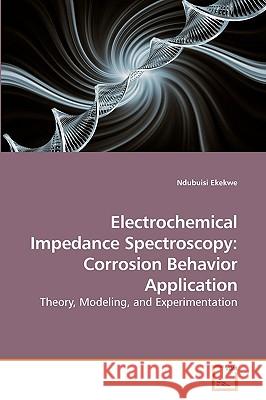Electrochemical Impedance Spectroscopy: Corrosion Behavior Application » książka
Electrochemical Impedance Spectroscopy: Corrosion Behavior Application
ISBN-13: 9783639221138 / Angielski / Miękka / 2009 / 104 str.
In the first half of the twentieth century, corrosion engineers and material scientists used techniques such as salt spray and weight loss as their major methods of evaluating corrosion rates. Despite their reliabilities, these techniques are complex and time-consuming. With time, a new method, electrochemical impedance spectroscopy (EIS), has emerged to become firmly established as de facto method of evaluating corrosion behavior. This popularity has directly followed the widespread use of impedance techniques in fundamental and applied electrochemistry, and materials science. In this book, EIS is explained, qualitatively and quantitatively, and its applications to corrosion behavior of metallic structures are discussed. Because the corrosion of carbon steel and aluminum is a major infrastructure degradation problem in practically all industries, including the chemical, mineral, materials, and petrochemical industries world-wide, EIS based corrosion experiments were conducted with these metals towards developing models that will guide structural continuity management. The book is written for professionals and the entire academic community











